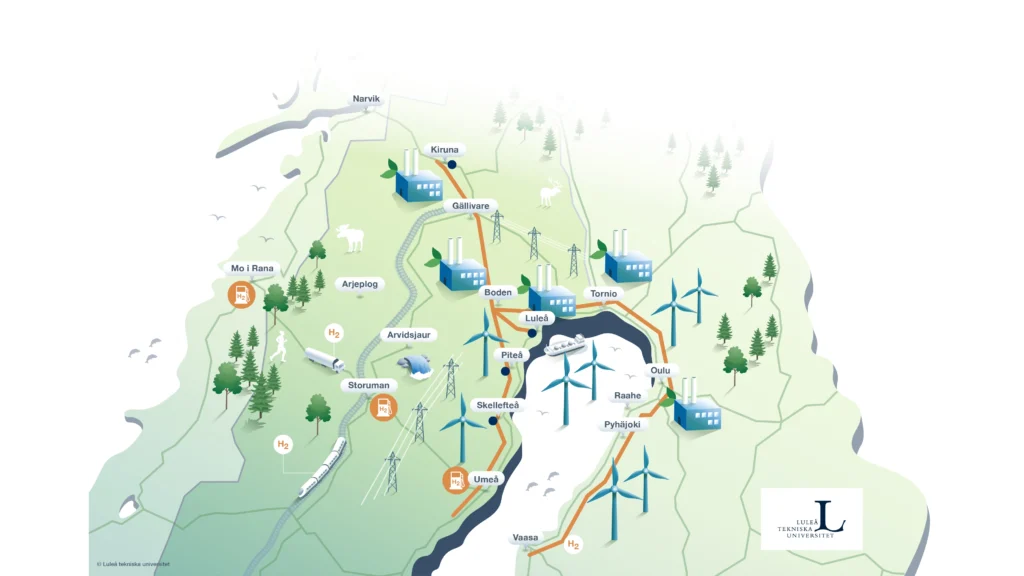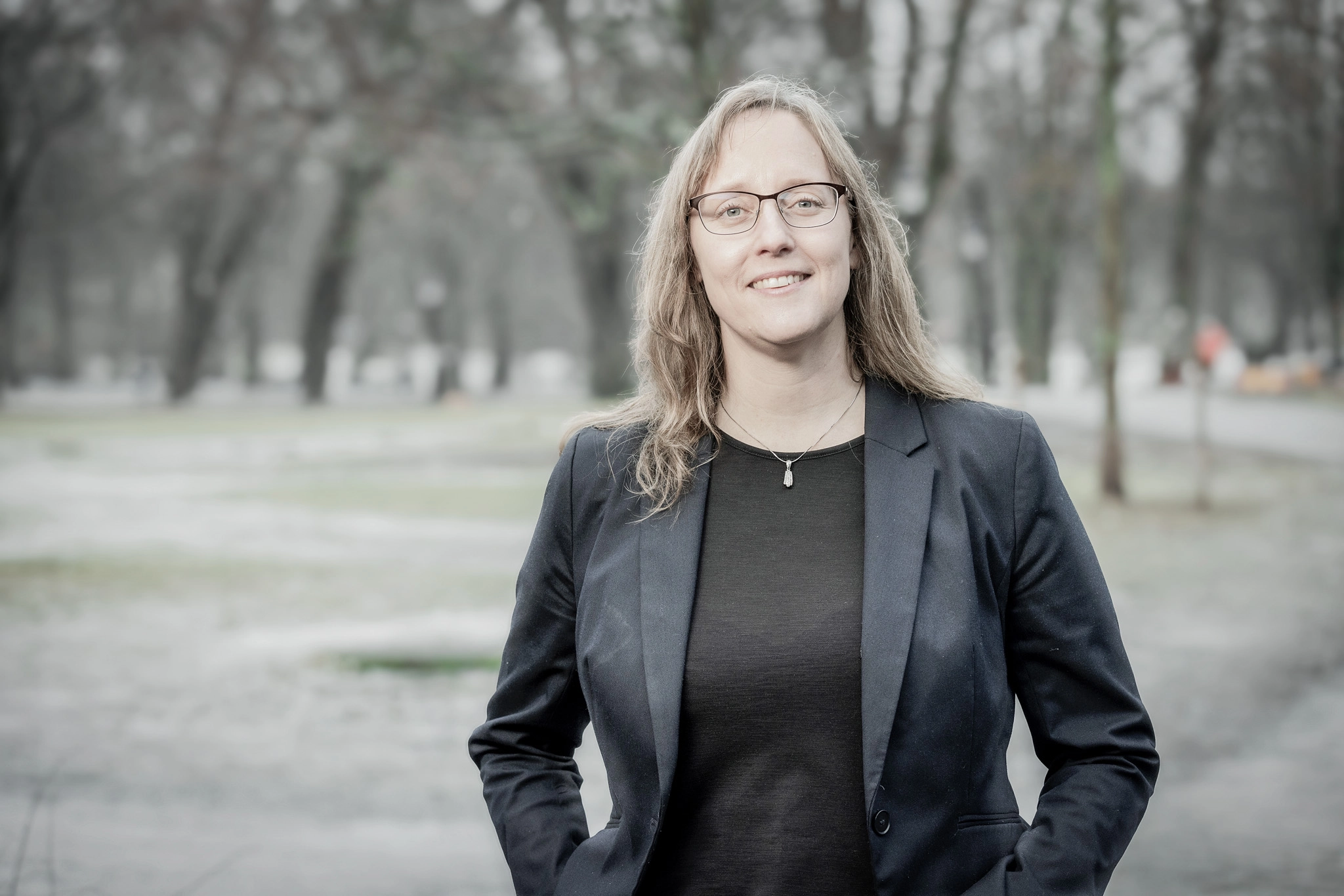Boden is a hub for both the railway and the electricity grid. Now the city has been singled out once again in the drive for the energy carrier of the future – green hydrogen.
The EU has highlighted the development of renewable hydrogen as crucial to achieving the climate goals of reducing climate emissions by at least 55% by 2030 and for Member States to be fully climate neutral by 2050.
That’s why we’re currently looking at northern Sweden and Finland. It has large undeveloped areas and abundant renewable energy at a relatively low electricity price. Conditions that allow the creation of a large green hydrogen infrastructure. Several industrial ventures here will also include large-scale hydrogen production, such as H2 Green Steel’s green steel production in Boden.
– The region has gained something of a leadership role thanks to these efforts. There are many people around the world who follow what is happening here and also actively show interest in participating, says Cecilia Wallmark, Director of CH2ESS at Luleå University of Technology.
CH2ESS is an abbreviation of Center for Hydrogen Energy Systems Sweden. A research and knowledge initiative at Luleå University of Technology (LTU) focusing on hydrogen use in industrial processes and energy systems. This initiative is being carried out in close cooperation with Swedish industry.
“There are companies that have expressed interest”
In a feasibility study carried out by LTU and the Research Institute of Sweden (RISE) investigated the conditions that exist and are needed to build a hydrogen infrastructure around the Gulf of Bothnia in northern Sweden and Finland. More specifically, it involved building a high-pressure hydrogen pipeline.
– There are already companies that have expressed an interest in building this infrastructure, and although a lot of research is needed in this area, it seems entirely feasible,” says Wallmark.
Historically, Boden has become a hub for both the expansion of the railway and the electricity grid. Now it looks like it will happen with another infrastructure investment. What makes the feasibility study point to Boden is its geographical location and the possibility of using large amounts of electricity from both wind and hydro power.
– We are not saying that this will happen, but that based on the available data it is a possible scenario. If it does, it will create new business opportunities. Partly for large industrial activities, as we already see in the region and in Boden. But hydrogen also offers opportunities for small and medium-sized enterprises. I think there is a lot of potential for development there.

Hydrogen in Norrbotten may become as natural as electricity. Boden is then seen as an optimal place to connect the management system. Illustration: LTU
The feasibility study also points to many advantages of creating an interconnected core network between the Nordic countries around the Gulf of Bothnia. Both Sweden and Finland will produce large quantities of green hydrogen linked to industrial initiatives, from the Ore Fields to North Ostrobothnia in Finland.
Countries are also expanding and strengthening the electricity grid to meet the new needs of industry.
– A major strength is that we already have partnerships with the grid and other systems, and we have a habit of collaborating across borders. It would have been logical to build a complementary hydrogen infrastructure where we can continue to cooperate.
Emergency services a bottleneck
For CH2ESS, the feasibility study also shows various research areas where there is some potential for development. This includes technical issues such as new materials to minimise leakage in hydrogen pipelines in cold climates, planning support for the best location of hydrogen pipelines, but also how the regulatory framework should be developed.
– In order to build out this infrastructure, the permitting process needs to be accelerated and the regulatory framework needs to be reviewed and adapted. One example is that the local emergency services give permission to handle hydrogen. And before 280 rescue services have updated their knowledge on the subject, we can lose a lot of valuable time,” says Cecilia Wallmark and continues:
– But we also need to broaden the research of hydrogen in more sectors. Legal, environmental, yes, in most areas hydrogen can be included.
Europe 2.0
The scale of what is expected to be built up in green hydrogen industries and infrastructure is similar to the expansion of hydropower in the region. Cecilia Wallmark also believes that there are several similarities between it and hydrogen, but also differences.
– It won’t be as big a change as when electricity became a staple in Swedish homes, and the good thing about hydrogen is that this infrastructure doesn’t require as much land area as the electricity grid does. At the same time, there are similar licensing processes, people are moving to the region because of the investments and that is positive. But when it comes to hydrogen, we need to look at the bigger picture.
A view becomes clear on the European Hydrogen Backbone website Link . It presents active and planned hydrogen pipelines on a map of EU countries and ties the Union together in infrastructure.
– This may not be Porjus 2.0 for Sweden and Norrbotten. But what we are researching now and doing here in the region is perhaps Europe 2.0. It makes everything very exciting.


